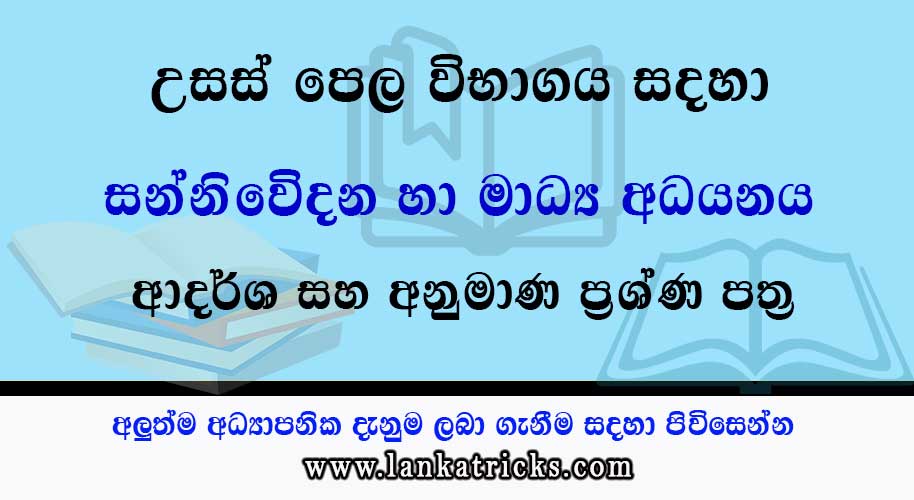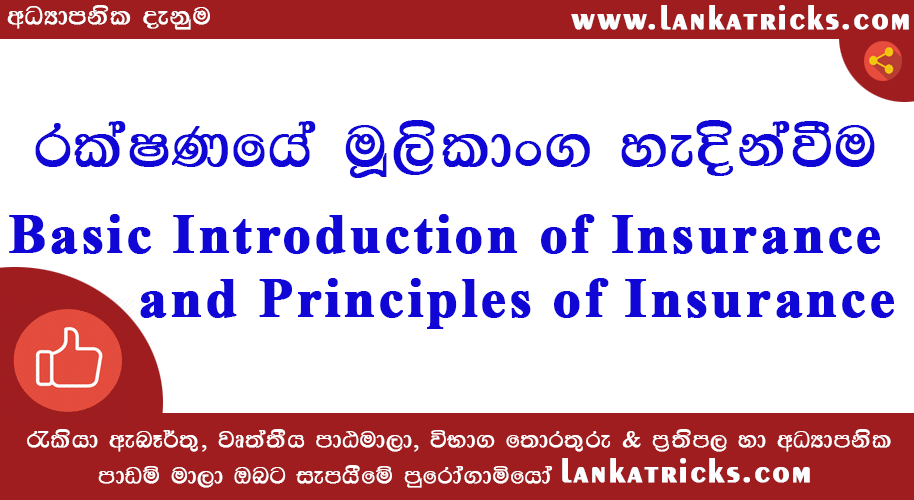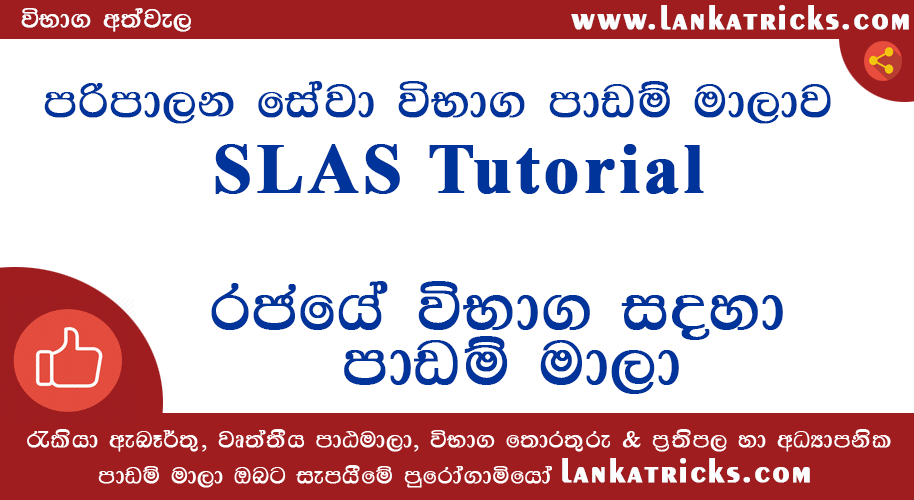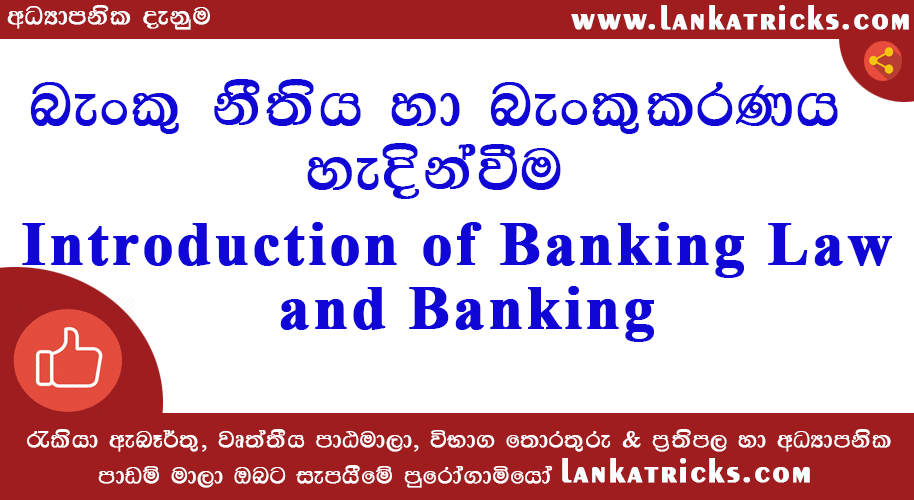Basic Insurance Terms - Actuarial Techniques Part 02
Published 7 years ago by LankaTricks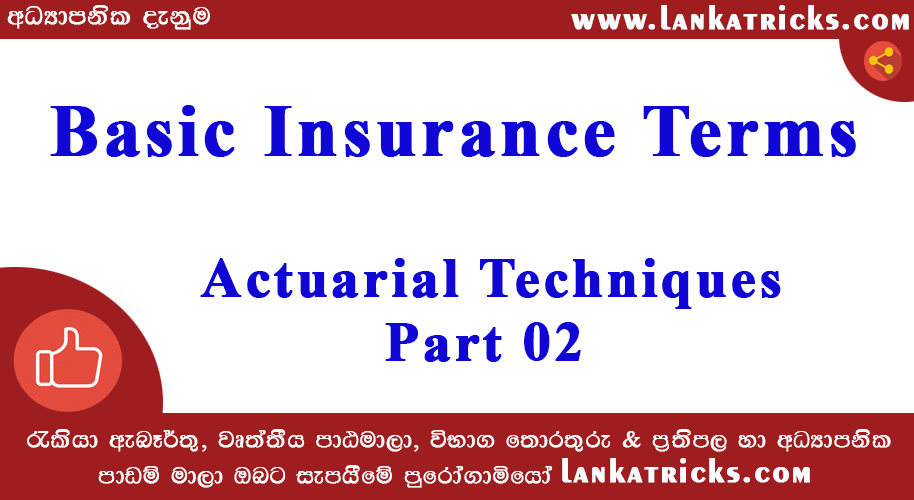
This is the second lesson of actuarial techniques. This part also discuss another terms of Basic Insurance Terms. if you don’t read first parts of this lesson. you can learn by using following link.
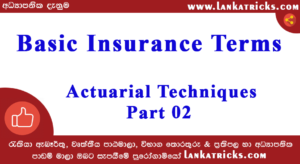
Estimated Ultimate Losses
Ultimate loss is the amount of money required to close and settle all claims for a defined group of policies. The aggregate sum of reported losses across all known claims may not equal the ultimate loss for many years. Reported losses and ultimate losses are different for two reasons. First, at any point in time, there may be unreported claims. The amount estimated to ultimately settle these unreported claims is referred to as an incurred but not reported (IBNR) reserve. Second, the accuracy of case reserves on reported claims is dependent on the information known at the time the reserve is set; consequently, the reported losses on existing claims may change over time. The incurred but not enough reported (IBNER) reserve (IBNER is also known as development on known claims) is the difference between the aggregate reported losses at the time the losses are evaluated and the aggregate amount estimated to ultimately settle these reported claims. Therefore, estimated ultimate loss is the sum of the reported loss, IBNR reserve and IBNER reserve:
Estimated Ultimate Losses = Reported Losses + IBNR Reserve + IBNER Reserve
Loss Adjustment Expense
In addition to the money paid to the claimant for compensation, the insurer generally incurs expenses in the process of settling claims; these expenses are called loss adjustment expenses (LAE). Loss adjustment expenses can be separated into allocated loss adjustment expenses (ALAE) and unallocated loss adjustment expenses (ULAE);
loss adjustment expenses (LAE) = allocated loss adjustment expenses (ALAE) + unallocated loss adjustment expenses (ULAE)
Allocated loss adjustment expenses are claim-related expenses that are directly attributable to a specific claim; for example, fees associated with outside legal counsel hired to defend a claim can be directly assigned to a specific claim. Unallocated loss adjustment expenses are claim-related expenses that cannot be directly assigned to a specific claim. For example, salaries of claims department personnel are not readily assignable to a specific claim and are categorized as Unallocated loss adjustment expenses.
Underwriting Expenses
In addition to loss adjustment expenses (i.e., claim-related expenses), companies incur other expenses in the acquisition and servicing of policies. These are generally referred to as underwriting expenses (or operational and administrative expenses). Companies usually classify these expenses into the following four categories:
- Commissions and brokerage
- Other acquisition
- General
- Taxes, licenses, and fees
Commissions and brokerage are amounts paid to insurance agents or brokers as compensation for generating business. Typically, these amounts are paid as a percentage of premiums written. It is common for commissions to vary between new and renewal business and may be based on the quality of the business written or the volume of business written or both.
Other acquisition costs are expenses other than commissions and brokerage expenses paid to acquire business. This category, for example, includes costs associated with media advertisements and mailings to prospective insureds.
General expenses include the remaining expenses associated with the insurance operations and any other miscellaneous costs. For example, this category includes costs associated with the general upkeep of the home office.
Taxes, licenses, and fees include all taxes and miscellaneous fees paid by the insurer excluding government income taxes. Premium taxes and licensing fees are examples of items included in this category.
Underwriting Profit
As mentioned earlier, the ultimate cost of an insurance policy is not known at the time of the sale. By writing insurance policies, the company is assuming the risk that premium may not be sufficient to pay claims and expenses. The company must support this risk by maintaining capital, and this entitles it to a reasonable expected return (profit) on that capital. The two main sources of profit for insurance companies are underwriting profit and investment income. Underwriting profit, or operating income, is the sum of the profits generated from the individual policies and is akin to the profit as defined in most other industries (i.e., income minus outgo). Investment income is the income generated by investing funds held by the insurance company.
This is the end of Basic Insurance Terms under Actuarial Techniques Tutorial. In next tutorial discuss about fundamentals of insurance equations.

